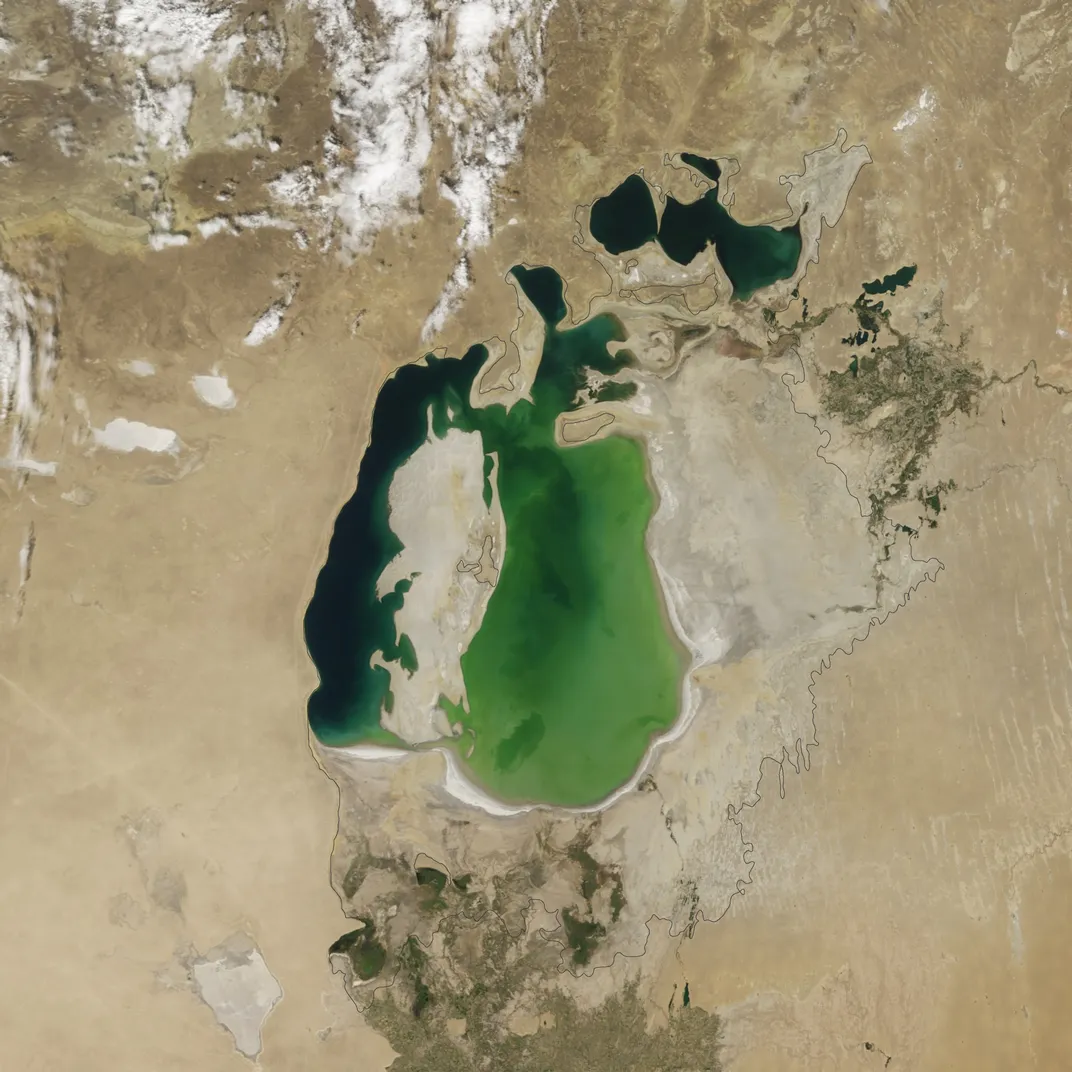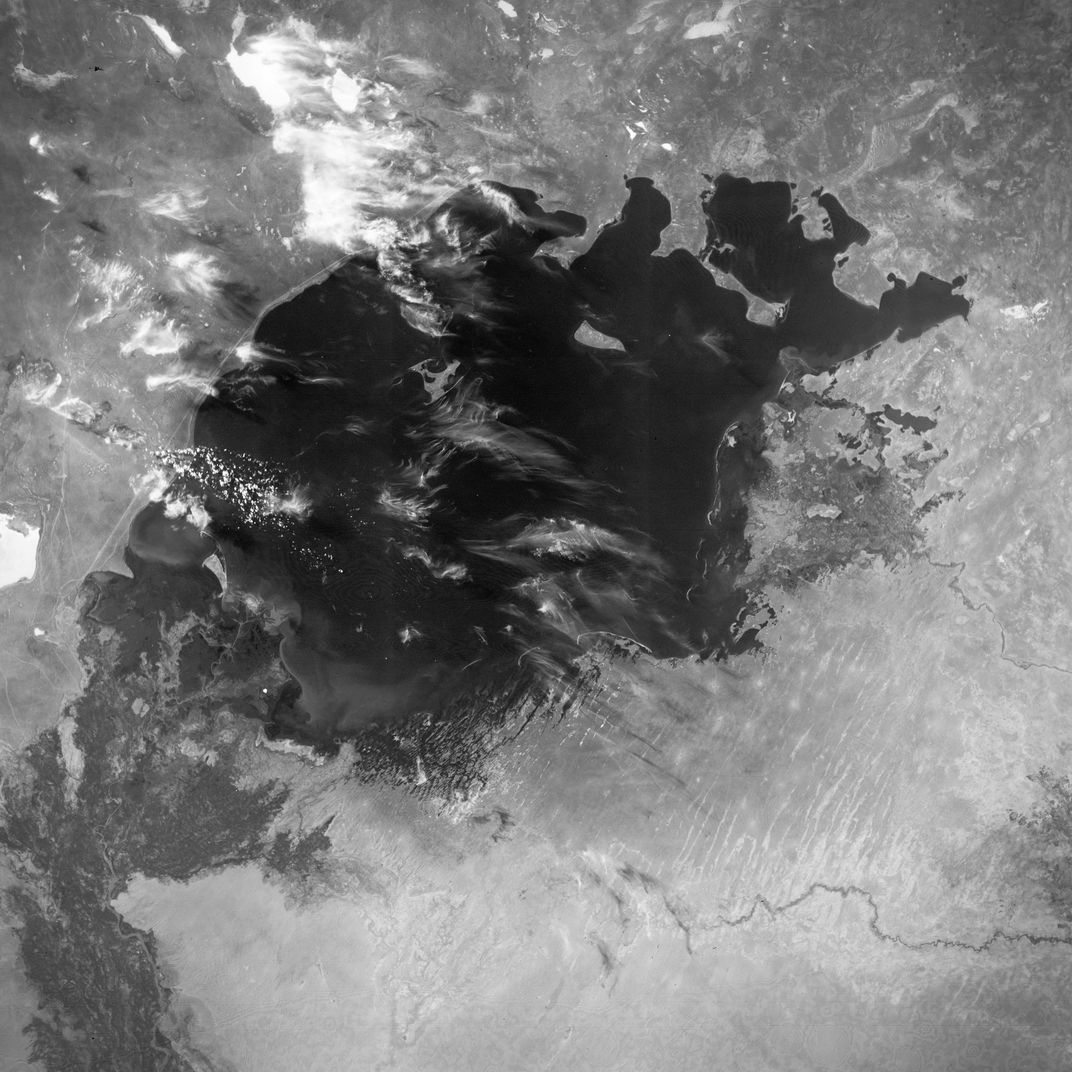The Aral Sea Is Pretty Much Gone
The fourth largest lake in the world is less than a tenth of its former size
/https://tf-cmsv2-smithsonianmag-media.s3.amazonaws.com/filer/bc/39/bc39a07c-0bf5-4c98-a542-3d9ada404e9e/10_02_2014_aral_sea_2014.jpg)
This ecological disaster has been decades in the making. The Aral Sea, running the border between Kazakhstan and Uzbekistan in central Asia was, in the 1960s, roughly “half the size of England.” That made it the fourth largest lake in the world. Now it's almost completely gone.

This isn't a story about climate change, though. The disappearance of the Aral Sea is best seen as a case study of other ways in which humans are reshaping the planet—by digging, dredging, damming, diverting and displacing soil and water on a scale rivaling nature itself.
In the 1950s and 60s, says NASA, the Soviet Union started a project to divert two rivers that flow into the Aral Sea, the Amu Dar'ya and Syr Dar'ya, so that their water could be used for irrigation. As far as Cold War-era Soviet plans to reshape nature go, diverting two rivers was a pretty small goal.
That decision may have turned the surrounding desert green, says NASA, but the shrinking lake wreaked havoc in the area, too:
As the lake dried up, fisheries and the communities that depended on them collapsed. The increasingly salty water became polluted with fertilizer and pesticides. The blowing dust from the exposed lakebed, contaminated with agricultural chemicals, became a public health hazard. The salty dust blew off the lakebed and settled onto fields, degrading the soil. Croplands had to be flushed with larger and larger volumes of river water. The loss of the moderating influence of such a large body of water made winters colder and summers hotter and drier.
Skip ahead a few decades and the Aral Sea is down to less than a tenth percent of its former size.

In the early 1990s, countries in the region teamed up to start the International Fund for Saving the Aral Sea, a bid to restore what they could and to figure out how to best use what was left. In 2005 Kazakhstan built a dam to try to re-fill some of the sea—a engineering fix to a problem caused by engineering.
If the restoration efforts can really get going, says the United Nation's Environment Programme, “a substantial recovery might be achieved within 20 years, although it is doubtful that the Aral Sea will ever be restored to the conditions that existed before the large-scale diversion of its inflowing rivers.”
/https://tf-cmsv2-smithsonianmag-media.s3.amazonaws.com/accounts/headshot/smartnews-colin-schultz-240.jpg)
/https://tf-cmsv2-smithsonianmag-media.s3.amazonaws.com/accounts/headshot/smartnews-colin-schultz-240.jpg)